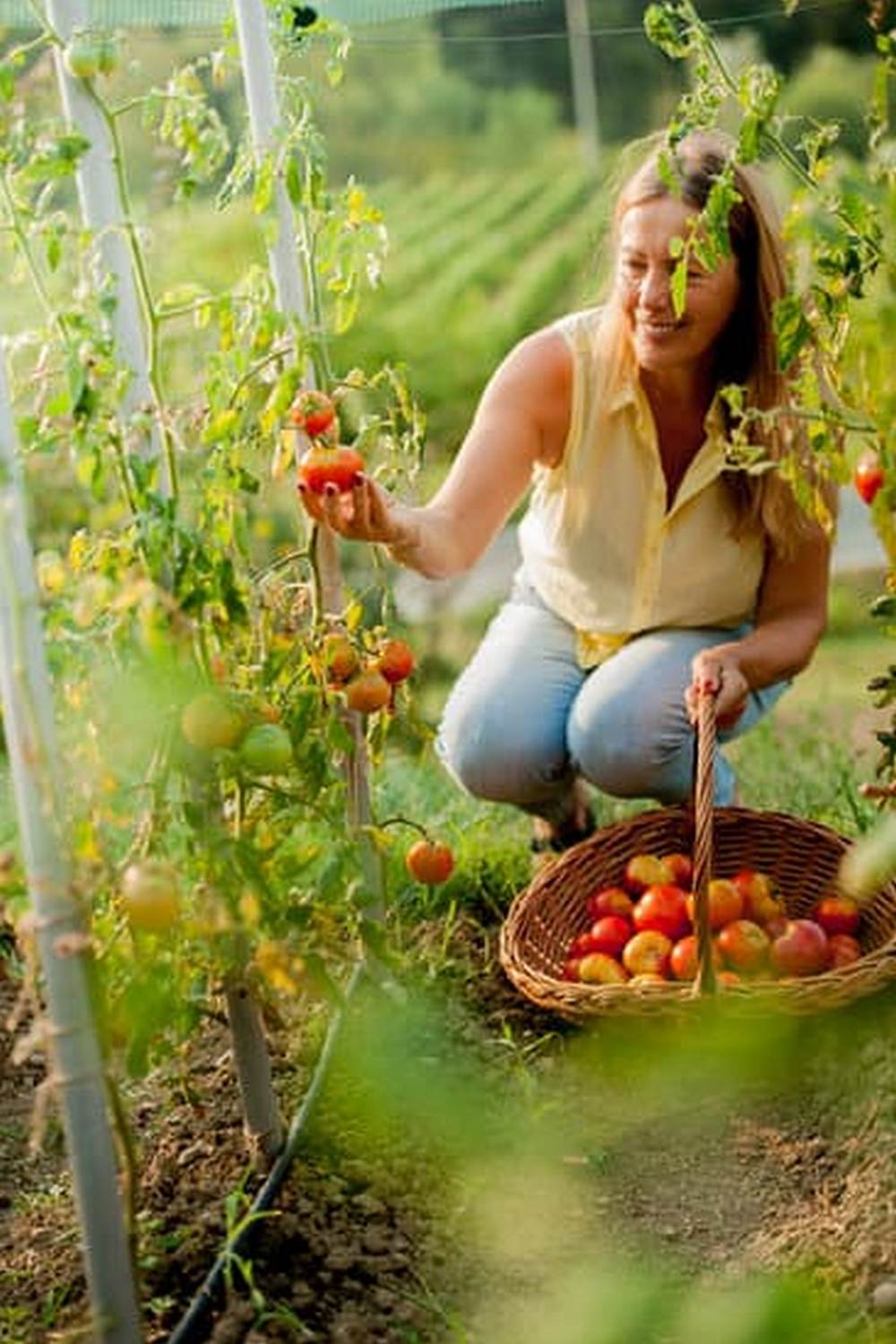Vertical indoor vegetable gardens are becoming increasingly popular among urban dwellers and home gardeners alike. This innovative approach to gardening allows individuals to grow their own fresh produce in limited space by utilizing vertical structures such as shelves, hanging planters, and wall-mounted containers. This article delves into the world of vertical indoor vegetable gardens, exploring the reasons behind the trend, the benefits of growing vegetables indoors, tips for setting up your own garden, design ideas, and much more.
With more people living in smaller apartments or homes with limited outdoor space, vertical indoor vegetable gardens provide a practical solution for those looking to cultivate their own fruits and vegetables. This trend is not only about maximizing space but also about promoting sustainability and self-sufficiency. By growing your own produce indoors, you reduce your carbon footprint and have access to fresh, organic food right at your fingertips.
In addition to space-saving benefits, growing vegetables indoors offers numerous advantages such as year-round cultivation, protection from pests and harsh weather conditions, and the ability to control environmental factors like light, temperature, and humidity. Whether you’re a seasoned gardener or a beginner looking to dip your toes into indoor gardening, vertical indoor vegetable gardens offer a convenient and rewarding way to enjoy the pleasures of homegrown produce.
Why Vertical Gardening Is Trending
Vertical gardening has become a widely popular trend in recent years, especially when it comes to indoor vegetable gardens. This innovative approach to gardening involves utilizing vertical space to grow plants upwards, rather than spread out horizontally.
One of the main reasons why vertical gardening is trending is due to the increasing popularity of urban and small-space living. With limited outdoor areas, many individuals are turning to vertical indoor vegetable gardens as a creative solution to grow their own produce.
In addition to its space-saving benefits, vertical gardening is also gaining traction because of its aesthetic appeal. Vertical indoor vegetable gardens add a touch of greenery and freshness to any living space, enhancing the overall ambiance and mood of the room. By incorporating lush green plants into interior design, individuals can create a more relaxing and inviting environment within their homes.
Another reason why vertical gardening is on the rise is its practicality and convenience. With vertical indoor vegetable gardens, individuals can easily access their plants for watering, maintenance, and harvesting without the need to bend over or kneel down.
This makes it an ideal option for those with physical limitations or busy lifestyles who still want to enjoy the benefits of homegrown produce. Additionally, growing vegetables indoors allows for year-round cultivation regardless of seasonal changes, providing a constant supply of fresh herbs and vegetables right at your fingertips.
Benefits of Growing Vegetables Indoors
Growing vegetables indoors can be a rewarding and beneficial experience for many reasons. One of the key advantages is the ability to have fresh produce right at your fingertips, regardless of the season or outdoor weather conditions. Vertical indoor vegetable gardens are a great way to maximize space and make use of underutilized areas in your home. By utilizing vertical space efficiently, you can grow a variety of vegetables, herbs, and fruits without requiring a large footprint.
Another benefit of growing vegetables indoors is the ability to have more control over the growing environment. This includes regulating temperature, humidity, and light levels to create optimal conditions for plant growth. With indoor gardening, you can also eliminate the risk of pests and diseases that often affect outdoor plants. This method of gardening allows you to closely monitor the health of your plants and provide them with personalized care as needed.
In addition to the practical benefits, indoor vegetable gardens can also contribute to a healthier lifestyle. Growing your own produce allows you to have access to fresh, organic food that is free from harmful chemicals or pesticides. It can also be a therapeutic activity that helps reduce stress and improve overall well-being. Whether you are an experienced gardener or new to growing plants, vertical indoor vegetable gardens offer a convenient and sustainable way to enjoy homegrown produce year-round.
| Benefits | Data |
|---|---|
| Fresh Produce Availability | Year-round access |
| Control Over Environment | Regulate temperature, humidity, light levels |
| Pest and Disease Control | Avoid risks associated with outdoor gardening |
| Health Benefits | Access to fresh organic food, therapeutic activity |
Choosing the Right Plants for Vertical Indoor Gardens
One popular choice for vertical indoor vegetable gardens is herbs. Herbs like basil, mint, parsley, and cilantro thrive in indoor environments and can add fresh flavors to your dishes. Leafy greens such as lettuce, spinach, and arugula also do well in vertical gardens and can be harvested continuously for salads or smoothies.
Additionally, consider growing compact vegetables that are well-suited for small spaces. Cherry tomatoes, mini bell peppers, and dwarf varieties of eggplant or zucchini are excellent choices for vertical gardens. These compact plants not only save space but also produce bountiful harvests that you can enjoy throughout the growing season.
In order to maximize your vertical indoor vegetable garden’s potential, mix and match different plant varieties to create a diverse and visually appealing display. By selecting a combination of herbs, leafy greens, and compact vegetables, you can enjoy a variety of homegrown produce right at your fingertips.
| Vertical Garden Plant Options | Benefits |
|---|---|
| Herbs (basil, mint) | Add fresh flavors to dishes |
| Leafy Greens (lettuce, spinach) | Continuous harvests for salads or smoothies |
| Compact Vegetables (cherry tomatoes, mini bell peppers) | Bountiful harvests in small spaces |
Vertical Indoor Garden Design Ideas
Vertical indoor vegetable gardens offer a creative and space-saving solution for urban dwellers and those with limited outdoor gardening space. Whether you live in a small apartment or simply want to bring the beauty of nature indoors, vertical gardens can transform your living space into a green oasis. Here are some design ideas to inspire your own vertical indoor vegetable garden:
- Utilize wall-mounted shelves or hanging baskets to display a variety of herbs and vegetables, such as basil, cherry tomatoes, and lettuce.
- Consider installing a vertical hydroponic system that allows plants to grow without soil, making it easier to control moisture levels and nutrient intake.
- Create a living wall using modular planters or pocket planters that can be easily mounted on any wall surface, adding an eye-catching element to your home decor.
Vertical gardens not only serve as a functional way to grow your own produce but also double as unique works of art that enhance the visual appeal of your living space. By incorporating different design elements and plant varieties, you can customize your vertical indoor vegetable garden to suit your style and preference.
In addition to traditional pots and planters, consider repurposing everyday items like mason jars, tin cans, or wooden crates for a more eclectic look. Mix and match plants with varying heights and textures to create visual interest and add depth to your vertical garden display. Embrace the opportunity to experiment with different layouts and arrangements until you find the perfect design that reflects your personality and tastes.
Whether you prefer a minimalist aesthetic or a lush jungle-inspired setting, there are endless possibilities when it comes to designing a vertical indoor vegetable garden. With some creativity and imagination, you can turn any blank wall or corner of your home into a vibrant green space that not only pleases the eye but also provides fresh herbs and vegetables right at your fingertips.
Let your imagination run wild as you explore new ways to incorporate vertical gardening into your indoor environment.
Tips for Setting Up a Vertical Indoor Vegetable Garden
Vertical indoor vegetable gardens are becoming increasingly popular for urban dwellers looking to grow their own fresh produce in limited spaces. Setting up your own vertical garden can seem daunting at first, but with the right tips and guidance, you can create a thriving indoor oasis of homegrown vegetables.
To get started on setting up your vertical indoor vegetable garden, consider the following tips:
- Choose the right location: Select a spot in your home that receives adequate sunlight for the plants you want to grow. South-facing windows are ideal for most vegetables.
- Select the appropriate containers: Opt for containers that are lightweight yet sturdy and have proper drainage holes to prevent waterlogging.
- Use a good quality potting mix: Ensure your soil is nutrient-rich and well-draining to promote healthy plant growth.
When setting up your vertical indoor vegetable garden, it’s important to consider the needs of each plant regarding sunlight, water, and spacing. By following these tips and giving your plants the care they require, you’ll soon be enjoying a bountiful harvest of fresh, homegrown produce right in the comfort of your own home.
With some creativity and planning, anyone can create a beautiful and productive vertical indoor vegetable garden. Whether you’re a seasoned gardener or just starting out, this innovative approach to growing vegetables indoors can provide you with a sustainable source of fresh produce year-round.
Maintenance and Care of Vertical Indoor Gardens
Maintaining and caring for vertical indoor vegetable gardens is essential to ensure the health and productivity of your plants. From watering to pruning, there are several tasks that need to be regularly performed to keep your vertical garden flourishing.
Watering
One of the most crucial aspects of maintaining a vertical indoor vegetable garden is proper watering. Unlike traditional gardens, vertical gardens may require more frequent watering due to the limited soil volume. It’s important to regularly check the moisture levels in the soil and adjust your watering schedule accordingly. Overwatering can lead to root rot, while underwatering can result in wilted plants. Consider installing a drip irrigation system or using self-watering planters to make watering more efficient.
Pruning and Trimming
To promote healthy growth and prevent overcrowding, regular pruning and trimming of your plants are necessary. Remove any dead or yellowing leaves, as well as overgrown branches or stems. Pruning also helps improve air circulation within the garden, reducing the risk of pests and diseases. Be sure to use clean and sharp tools when pruning to minimize damage to your plants.
Pest Control
Vertical indoor vegetable gardens are not immune to pest infestations, so it’s important to stay vigilant and take preventative measures against common garden pests. Inspect your plants regularly for signs of pests such as aphids, spider mites, or whiteflies. Consider using natural pest control methods like neem oil or introducing beneficial insects like ladybugs to keep pest populations in check. Additionally, practicing good hygiene by keeping your garden clean and free of debris can help reduce pest problems.
Harvesting and Enjoying Your Homegrown Produce
Preparing for Harvest
When it comes to harvesting your homegrown produce from your vertical indoor vegetable garden, timing is key. Different vegetables have different harvest times, so it’s essential to keep track of when each plant is ready to be harvested. One way to determine if a vegetable is ready for picking is by checking its size and color. For instance, tomatoes should be ripe and firm with bright colors before harvesting them.
Enjoying the Fruits (Or Vegetables) of Your Labor
Once you’ve harvested your vegetables from your vertical indoor garden, it’s time to enjoy the fresh flavors of your homegrown produce. There’s something incredibly satisfying about eating vegetables that you grew yourself. From tossing freshly picked lettuce in a salad to sautéing peppers and zucchinis in a stir-fry, the possibilities are endless when it comes to using your harvest in cooking.
Prolonging the Freshness
To make the most out of your harvest from your vertical indoor vegetable garden, consider storing any excess produce properly to prolong its freshness. Some vegetables can be stored in the refrigerator, while others can be preserved through canning or freezing.
By properly storing your homegrown vegetables, you can continue enjoying them even after they’ve been harvested. Remember that nothing beats the taste of freshly picked produce, so savor every bite whenever you enjoy the fruits (or vegetables) of your labor from your vertical indoor garden.
Case Studies
Vertical indoor vegetable gardens have gained popularity in recent years as more people become interested in growing their own food in urban environments. One successful case study is the Green Thumb Apartment, where a young couple transformed their small balcony into a flourishing vertical garden.
By utilizing hanging planters, trellises, and stackable containers, they were able to grow an abundance of fresh vegetables like tomatoes, peppers, and herbs right outside their kitchen window. Not only did this project provide them with a sustainable source of produce, but it also added a vibrant touch to their living space.
Another inspiring example is the Urban Oasis Café, a trendy restaurant that incorporated vertical indoor vegetable gardens into its interior design. By installing hydroponic systems along the walls of the dining area, the café not only added a decorative element but also grew fresh lettuce, microgreens, and edible flowers for use in their dishes.
Customers were not only impressed by the innovative concept but also enjoyed knowing that they were consuming hyper-local produce that was grown on-site. The success of this venture not only reduced the café’s carbon footprint but also inspired other restaurants to explore similar sustainable practices.
Moreover, one family in a high-rise apartment building successfully created a self-sustaining vertical indoor vegetable garden by using automated irrigation systems and LED grow lights. Despite limited space and natural light, they were able to cultivate a variety of vegetables year-round, including leafy greens, cucumbers, and strawberries.
The convenience of having fresh produce just steps away from their kitchen inspired them to cook healthier meals and reduced their reliance on store-bought vegetables. This case study highlights how vertical indoor vegetable gardens can empower individuals to take control of their food sources and lead more sustainable lifestyles.
Conclusion
In conclusion, vertical indoor vegetable gardens offer a sustainable solution for urban dwellers and anyone looking to grow their own produce in limited space. The trend of vertical gardening is gaining popularity due to its practicality, efficiency, and numerous benefits. By utilizing vertical space, individuals can maximize their gardening efforts and enjoy the satisfaction of harvesting fresh vegetables right from their own homes.
The benefits of growing vegetables indoors are manifold. Not only does it provide a convenient source of fresh produce, but it also allows for year-round gardening regardless of weather conditions.
Vertical indoor gardens help improve air quality, reduce stress levels, and promote a healthier lifestyle by encouraging individuals to eat more fruits and vegetables. Furthermore, cultivating your own food can lead to cost savings and reduce your carbon footprint by decreasing reliance on store-bought produce that may have been transported over long distances.
When setting up a vertical indoor vegetable garden, it is essential to carefully select the right plants that thrive in indoor environments. Herbs like basil, mint, and parsley are excellent choices for beginners, while leafy greens such as lettuce and spinach are ideal for vertical growing systems.
With proper design and maintenance techniques, anyone can create a thriving indoor garden that not only beautifies their living space but also provides a sustainable source of nutritious food. Embracing vertical indoor gardening is not just a trend; it is a lifestyle choice that promotes self-sufficiency, environmental consciousness, and overall well-being.
Frequently Asked Questions
What Vegetables Grow Well in Vertical Gardens?
Many vegetables grow well in vertical gardens, including but not limited to tomatoes, cucumbers, peppers, lettuce, spinach, and herbs like basil and oregano. These plants thrive in vertical settings due to their ability to grow upwards instead of outwards.
Are There Any Drawbacks to Using Vertical Gardens?
While vertical gardens have numerous benefits, there are some drawbacks to consider. These include the limited space for root growth which can affect the overall size and productivity of plants. Additionally, vertical gardens may require more frequent watering and maintenance compared to traditional gardens.
Can You Make a Vertical Vegetable Garden?
Creating a vertical vegetable garden is definitely possible with some planning and creativity. Building a structure such as a trellis or a specialized vertical garden planter can provide the necessary support for your vegetable plants to grow upwards. Proper soil preparation and watering techniques are essential for success in this type of gardening endeavor.

If you’re looking to get into vegetable gardening, or are just looking for some tips on how to make your current garden better, then you’ve come to the right place! My name is Ethel and I have been gardening for years. In this blog, I’m going to share with you some of my best tips on how to create a successful vegetable garden.





